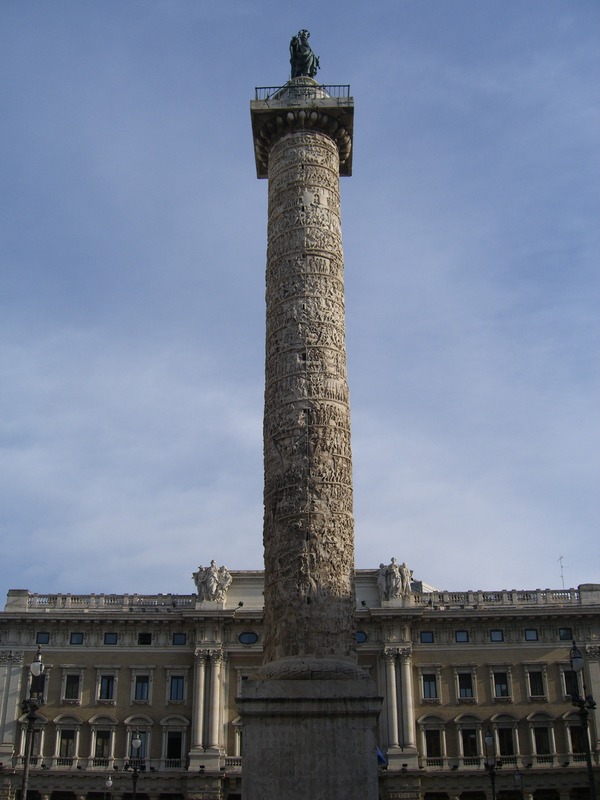Construction
The Column of Marcus Aurelius is an elaborate monument. It is composed of a base and column originally topped with a bronze statue of the emperor It has an internal staircase leading to a viewing platform at the top of the column. This column was modeled after Trajan’s Column, and used many of its innovative techniques. While there are no surviving sources documenting the planning and construction of The Column for Marcus Aurelius, it is possible to get a sense of the process through surviving sources concerning the building of other monuments.
The construction process most likely began when the Senate decided to dedicate a monument to Marcus Aurelius and issued a decree. Then, as was customary in this period of the Roman Empire, the Senate held a competition in order to select the architect for the project. Then a contractor, who was also chosen through a competition, would handle the actual construction.
After the plans and details of the column were finalized by the architect, construction began. The monument was made entirely of marble blocks, some of which were shaped into drums for the shaft of the column. The staircase was carved in the drums on the ground before being lifted onto the monument. The finer details, such as the frieze, were carved after the entire monument was assembled. The column was held together with metal dowels, and then secured by pouring molten lead down shafts in the stone.
Martin Beckmann, The Column of Marcus Aurelius: The Genesis & Meaning of a Roman Imperial Monument (Chapel Hill: University of North Carolina Press, 2011), Chapter 4 (68-83)
